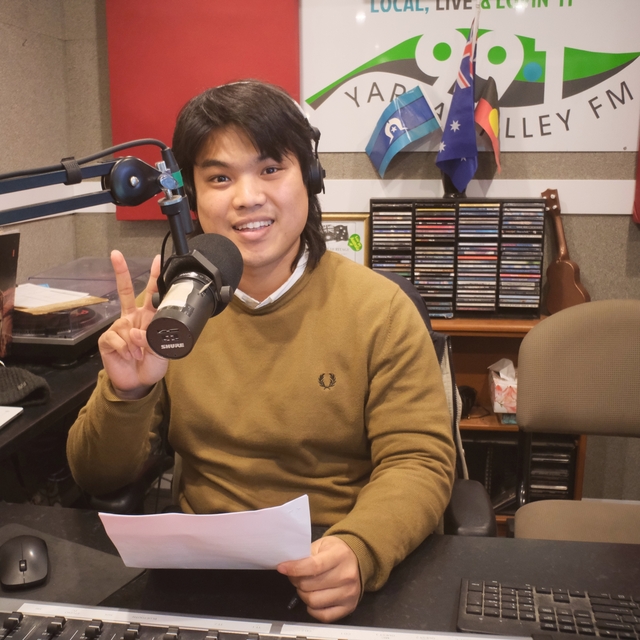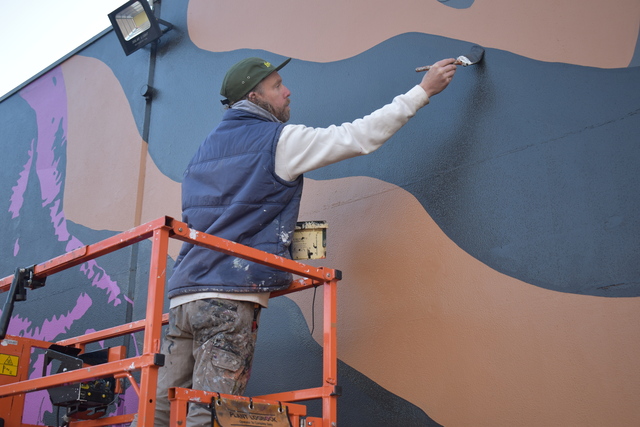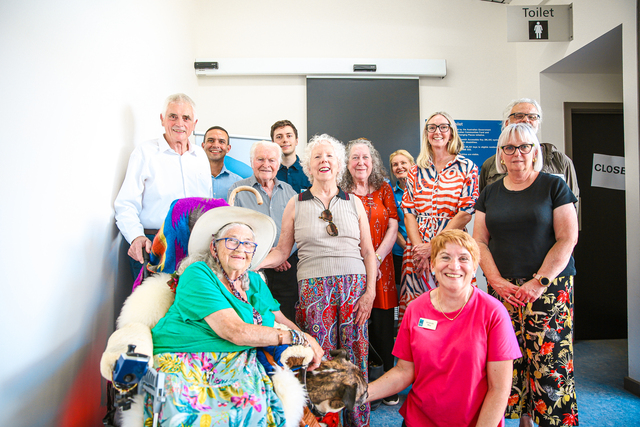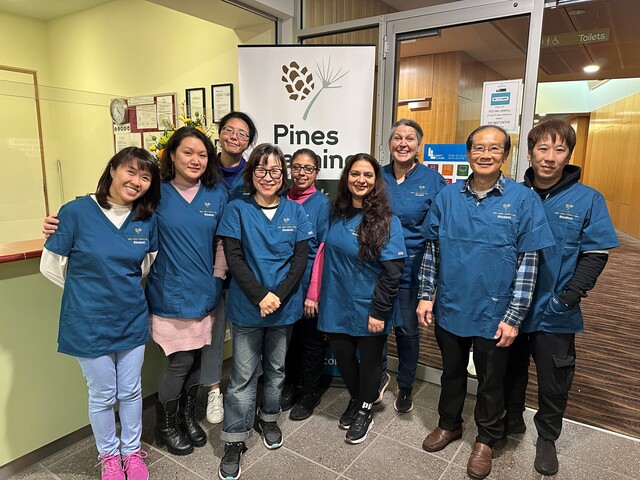OBITUARY
WHEN newlywed Dot Harsant found herself waking on the first morning of her honeymoon in a horse-drawn baker’s van on the edge of the Kooyong tip, she must have had an inkling that life with her new husband, Les, was never going to be dull.
Milking Toggenburg goats, answering the door to ASIO agents, printing a local newspaper, and later race books, marching for Reconciliation and raising three children, were part, but by no-means all, of that shared 64-year adventure.
Les, who was born in 1924, was the oldest of Alfred and Daisy Harsant’s four children.
The foundation stone of his remarkable life was set in Melbourne in the poverty of the Depression. He continued to build on that foundation throughout his life through formal study, self-education and living life to the full.
Les and Dot moved to Healesville in 1951.
The broad cross-section of the Healesville community who paid tribute to a loved and respected friend and colleague at Woori Yallock on 25 November, reflected a life-time of dedication to his community.
Les’s story – the abridged version – was told by his daughter Marney and son Graham. He started work at 16 as an apprentice fitter and turner, during which time he met and courted local girl Dot Gamble, a draftswoman working for an engineering company.
They married in December 1946 and Les studied at night school to gain a certificate in production engineering.
Times were tough in Healesville and their hands-on approach to making a go of it included running a milking-goat herd, handyman jobs and establishing an independent home planning agency.
Many of Healesville’s houses and the Bikini Motel (later the Park Drive) were drawn up by Dot and Les. They were instrumental in getting proper building specifications enforced by the local council.
Their next venture, a home-delivery grocery service, took Les to the bush camps of the Toolangi paling cutters and timber workers, and the Thomas Road mill huts.
Les’s love of a chat, and interest in people and their stories meant he was often still delivering late at night.
Looking for a more lucrative income, Dot and Les went into debt and bought a grocery shop. Around the same time Les started Corroboree Recordings and joined the Healesville Amateur Theatrical Society.
In 1960 he recorded a Melbourne concert of famous African American singer and civil rights advocate Paul Robeson.
Robeson’s scratchy but powerful Song of Peace taken from that recording voiced their common values … “None shall push aside another, none shall let another fall; March beside me, Oh my brother; all for one and one for all.”
In 1959, Les got the job as secretary of The Australasian Book Society, travelling into Melbourne each day on the steam train from Healesville.
In so many ways, he was in his element. The job brought him into contact with Australian writers, radical thinkers, trade union activists and, notably, Aboriginal leader Pastor (later Sir) Doug Nicholls. Les joined the Aboriginal Advancement League, the beginning of an on-going commitment to advocating for justice and recognition for Aboriginal people and Reconciliation. Les’s leanings to the left side of politics wasn’t surprising given his background.
In 1961, he found himself on the left side of the Healesville Hospital dispute, maintaining loyalty to his friend Dr Arthur Deery against the Hospital committee. The dispute split the community.
As a member of the Healesville Hospital Reform Movement, Les was labelled a communist and un-Australian, even warranting a visit from ASIO agents.
The Healesville News which the Harsants ran from March 1960 to December 1964 had its roots in that dispute – initially presenting an alternative view to that of the Healesville Guardian which supported the hospital committee and ultimately providing a well-rounded community newspaper.
Les and Dot had a strong belief in the role of, and the need for, a local paper and helped get the Mountain Views newspaper up and running. Les’s wisdom, guidance, support and literary contributions were often sought and greatly appreciated by founding editor Mardie Lambert and by me. When the Healesville News was bought out, the Harsants went into printing tote tickets and race books as well as meeting local printing needs.
Les returned to formal education in the early ’70s when he got his HSC and a library technician certificate. He worked as a librarian at Lilydale Tech until 1980. He had graduated with a Bachelor of Arts degree from Swinburne and went on to get a diploma of education, working as a teacher at Mooroolbark Tech until 1986 when he retired.
In retirement, he threw himself into his community. He was active in the conservation of the Coranderrk Aboriginal Cemetery and a founding member of the Healesville and District Historical Society, a member of Healesville Environment Watch, Badger Creek Progress Association, Yarra Ranges Reconciliation Group, Worawa Aboriginal Football Club, The Australian Greens, the John Shaw Neilson Society, volunteered with Meals on Wheels and was a regular at the Healesville indoor pool.
Historical Society president Bryn Jones paid tribute to Les describing him as a man of principle and integrity. He said he had a passion for historical truth and left a legacy of articles, pamphlets, newsletters and journals.
“This society honours Les’s humanity, his modesty, his energy, his generosity and his commitment to his community,” he said.
Les Harsant died at home surrounded by his loving family, on 18 November 2010.
He will be greatly missed.
Les’s legacy lives on
Digital Editions
-

Yarra Ranges Council’s Draft Health and Wellbeing Strategy released for community feedback
Yarra Ranges Council has opened a community feedback for the Draft Health and Wellbeing Strategy over the next few weeks. Under the Public Health and Wellbeing…





